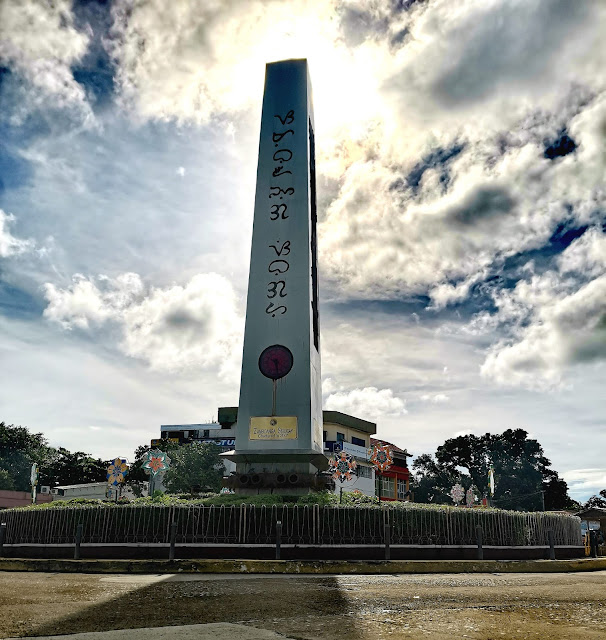Alicia, a municipality situated in the province of Zamboanga Sibugay, Philippines, is a town that bridges the past and the future with its unique blend of heritage and progress. With diverse native languages like Subanon, Cebuano, Chavacano, and Tagalog, Alicia reflects the rich cultural tapestry of the Philippines. The town covers an area of 183.08 square kilometers and is located at coordinates 7°30′22″N 122°56′28″E.
History and Cultural Heritage
Alicia's history is rooted in the heritage of its people. Throughout the years, the town has preserved its cultural traditions and practices, making it a treasure trove of indigenous customs and beliefs. The native languages spoken in Alicia are not only a means of communication but also a testament to the town's cultural diversity and resilience.
Geography and Population
Alicia is part of the 1st district of Zamboanga Sibugay and is composed of 27 barangays. The town's population, as recorded in the 2020 census, stands at 39,456, residing in 9,173 households. With a population density of approximately 220 individuals per square kilometer, Alicia maintains a moderate population concentration, fostering a sense of community and camaraderie among its residents.
The town's geography offers a diverse landscape, ranging from coastal areas to elevated regions reaching as high as 271 meters. The varying terrains add to Alicia's natural beauty and offer opportunities for various outdoor activities.
Government and Leadership
Alicia's local government operates under a Sangguniang Bayan form of governance. Mayor Remberto G. Sotto leads the administration, while Vice Mayor Filna Rhina A. Tan assists in managing the town's affairs. At the national level, Alicia is represented by Wilter W. Palma II.
The Municipal Council, composed of elected representatives, plays a vital role in shaping policies and initiatives for the benefit of the community. With an electorate of 25,597 voters in the 2022 elections, Alicia's residents actively participate in the democratic process, ensuring that their voices are heard in matters concerning governance.
Economy and Challenges
Alicia's economy is classified as a 3rd municipal income class, indicating a moderate level of economic activity. However, like many regions in the Philippines, the town faces challenges, including poverty. As of 2018, the poverty incidence in Alicia was recorded at 37.31%. Addressing poverty and promoting inclusive growth are priorities for the local government as they work to improve the well-being of all residents.
The town's financial situation appears stable, with assets valued at ₱591.6 million and total revenue of ₱155 million recorded in 2020. On the expenditure side, the government allocated ₱135.6 million, resulting in liabilities of ₱287.1 million.
Preserving Heritage and Promoting Development
Preserving Alicia's cultural heritage is of paramount importance, as it contributes to the town's unique identity and fosters a strong sense of pride among its people. Emphasizing the importance of native languages, celebrating traditional festivals, and showcasing local crafts can help preserve and promote the rich cultural heritage of Alicia.
Din Ladja Resort in Alicia, Zamboanga Sibugay, is an enchanting retreat that beckons travelers with its unspoiled beauty, warm hospitality, and cultural richness. As a sanctuary nestled amidst the splendor of nature, the resort invites guests to experience a tranquil escape while immersing themselves in the local heritage and exploring the natural wonders of the region.
Whether seeking relaxation or adventure, Din Ladja Resort promises an unforgettable journey of discovery, leaving visitors with cherished memories and a desire to return to this hidden oasis time and again.
Moreover, the local government's efforts to promote economic growth and development must be complemented by sustainable practices and environmental conservation. Responsible development of tourism, agriculture, and other industries can create economic opportunities while preserving the natural beauty and resources that Alicia has to offer.
**Conclusion**
Alicia, Zamboanga Sibugay, is a town where heritage meets progress. With its rich cultural heritage, diverse geography, and warm community, Alicia holds the promise of a vibrant and inclusive future. By addressing challenges, preserving heritage, and promoting sustainable development, Alicia can continue to flourish as a shining example of the harmonious coexistence of tradition and progress in the heart of the Zamboanga Peninsula.
List of Barangays
- Alegria
- Bagong Buhay
- Bella
- Calades
- Concepcion
- Dawa-dawa
- Gulayon
- Ilisan
- Kapatagan
- Kauswagan
- Kawayan
- La Paz
- Lambuyogan
- Lapirawan
- Litayon
- Lutiman
- Milagrosa (Baluno)
- Naga-naga
- Pandan-pandan
- Payongan
- Poblacion
- Santa Maria
- Santo Niño
- Talaptap
- Tampalan
- Tandiong Muslim
- Timbang-timbang

